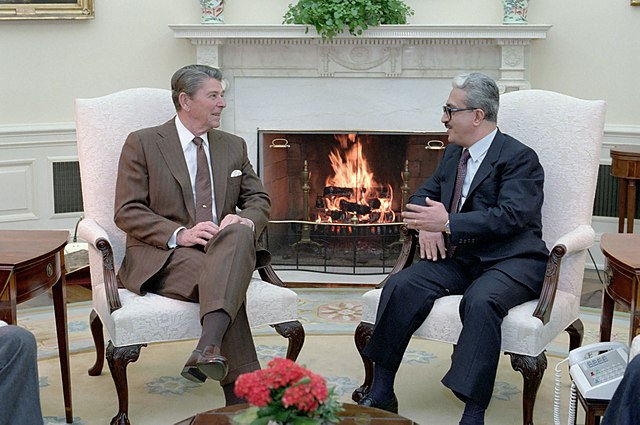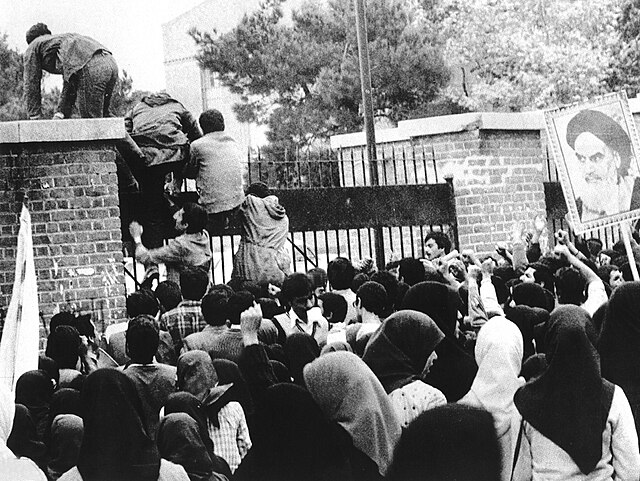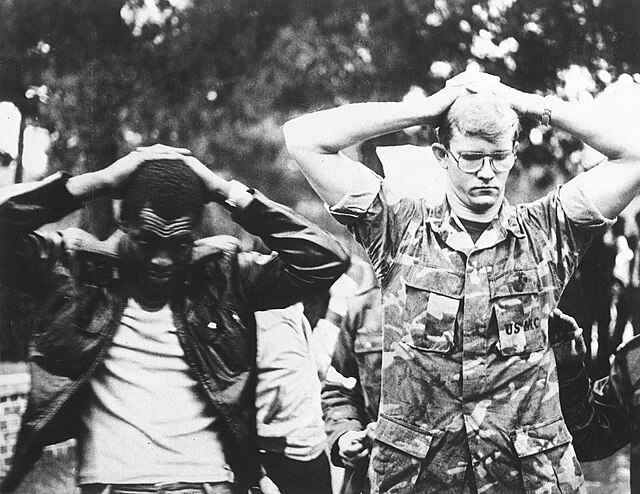United States support for Iraq during the Iran–Iraq War
United States support for Ba'athist Iraq during the Iran–Iraq War, in which it fought against post-revolutionary Iran, included several billion dollars' worth of economic aid, the sale of dual-use technology, military intelligence, and special operations training. The U.S. refused to sell arms to Iraq directly due to Iraq's ties to Palestinian groups which the U.S. designates as terrorist organizations such as the Palestinian Liberation Front and Abu Nidal Organization, but several sales of "dual-use" technology have been documented; notably, Iraq purchased 45 Bell helicopters for $200 million in 1985. Of particular interest for contemporary Iran–United States relations are accusations that the U.S. government actively encouraged Iraqi leader Saddam Hussein to invade Iran, supported by a considerable amount of circumstantial evidence and generally regarded as the conventional wisdom in the Arab world, but several scholars and former U.S. government officials deny that any such collusion occurred, and no direct documentary proof of it has been found.

The Iranian Shah Mohammad Reza Pahlavi meeting with President Jimmy Carter and Zbigniew Brzezinski, 1977.
President Ronald Reagan and Vice President George H. W. Bush work in the Oval Office of the White House, July 20, 1984.
Ronald Reagan hosts then-Iraqi foreign minister Tariq Aziz of the Saddam Hussein administration at the White House, 1984
Iraq purchased 8 strains of anthrax from the United States in 1985, according to British biological weapons expert David Kelly. The Iraqi military settled on the American Type Culture Collection strain 14578 as the exclusive strain for use as a biological weapon, according to Charles Duelfer.
The Iran hostage crisis was a diplomatic standoff between Iran and the United States. Fifty-three American diplomats and citizens were held hostage after a group of militarized Iranian college students belonging to the Muslim Student Followers of the Imam's Line, who supported the Iranian Revolution, including Hossein Dehghan, Mohammad Ali Jafari and Mohammad Bagheri, took over the U.S. Embassy in Tehran and took them as hostages. The hostages were held for 444 days, from November 4, 1979 to their release on January 20, 1981. The crisis is considered a pivotal episode in the history of Iran–United States relations.
Iranian students crowd the U.S. Embassy in Tehran (November 4, 1979)
Anticipating the takeover of the embassy, the Americans tried to destroy classified documents in a furnace. The furnace malfunctioned and the staff was forced to use cheap paper shredders. Skilled carpet weavers were later employed to reconstruct the documents.
Two American hostages during the siege of the U.S. Embassy.
Barry Rosen, the embassy's press attaché, was among the hostages. The man on the right holding the briefcase is alleged by some former hostages to be future President Mahmoud Ahmadinejad, although he, Iran's government, and the CIA deny this.








